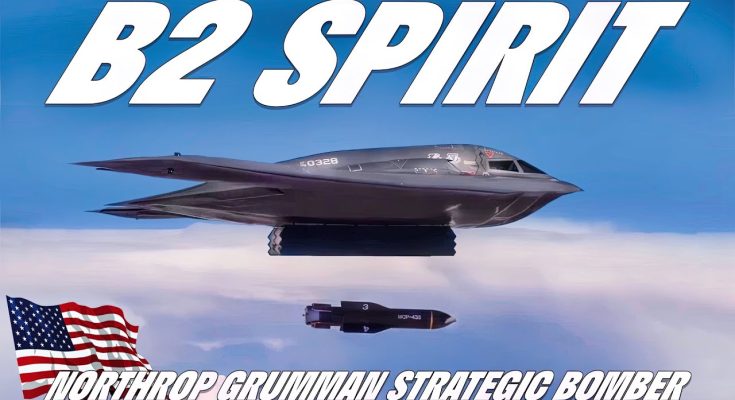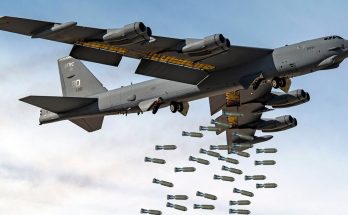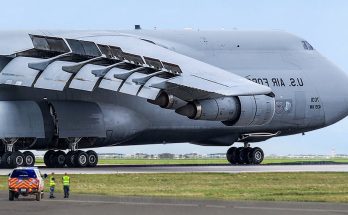The U.S. Air Force has recently conducted several high-profile missions involving fully armed B-2 Spirit stealth bombers, marking a significant demonstration of American military power and its ability to respond rapidly to emerging threats worldwide. The B-2 Spirit, known for its stealth capabilities, remains a vital asset for the U.S. military due to its ability to penetrate enemy defenses, whether for conventional or nuclear strike missions.
B-2 Spirit: A Game-Changer in Strategic Deterrence
The B-2 Spirit, often referred to as a “stealth bomber,” is a highly advanced aircraft designed to carry both conventional and nuclear payloads over vast distances without detection. Its low-observable design allows it to avoid radar detection, making it incredibly effective in penetrating enemy airspace even under the most sophisticated air defense systems.
- Stealth Design: The B-2’s unique flying-wing shape minimizes its radar signature, making it difficult to detect by enemy radar.
- Range and Payload: The aircraft can carry up to 40,000 pounds (18,000 kg) of ordnance, including precision-guided bombs and nuclear weapons, and has an impressive unrefueled range of around 6,000 nautical miles (11,100 kilometers), enabling global reach.
Recent Deployments
The B-2 bombers have been increasingly involved in global operations, being deployed fully armed as part of strategic deterrence missions and training exercises. Recent activities highlight the aircraft’s role in addressing key geopolitical challenges.
1. Global Response Operations
In 2024, fully armed B-2 bombers were deployed to the Middle East and North Africa as part of mission-specific objectives to deter hostile actions. This was particularly important in regions like the Persian Gulf, where escalating tensions with Iran and other actors required a quick and powerful response. B-2s were tasked with targeting hardened underground facilities, a capability that requires the precise accuracy of these bombers, even when facing formidable air defenses.
2. Joint Exercises with Allies
The B-2 Spirit also recently participated in joint exercises with NATO and regional allies, further cementing its role as a key component of U.S. global deterrence strategies. One of the key exercises took place in the Pacific region, where U.S. forces partnered with Australia, showcasing the bomber’s ability to respond to threats in the Indo-Pacific, particularly related to rising tensions with China.
- These exercises not only demonstrated the bomber’s global reach but also its ability to integrate with allied forces, enhancing interoperability and the effectiveness of joint military operations.
3. Rapid Reaction Force
In a scenario requiring rapid deployment, fully armed B-2 bombers were recently positioned for a quick-response mission, providing the U.S. military with the ability to carry out strategic strikes within hours of any escalation. This kind of flexibility highlights the significant deterrent effect of the B-2, as it can deliver both nuclear and conventional payloads on demand, creating strategic uncertainty for adversaries.
Strategic Implications
The decision to deploy fully armed B-2 bombers during these missions sends a clear message of U.S. military readiness and its commitment to maintaining a strong deterrence posture globally. These operations are a demonstration of how stealth bombers can ensure rapid and precise strikes in a contested and high-threat environment.
Additionally, the integration of B-2 bombers in joint operations with U.S. allies ensures that the Air Force maintains its role as the dominant global air power, capable of striking anywhere at a moment’s notice. This also strengthens the defense posture in regions facing adversarial military buildup, such as in the Middle East or the Indo-Pacific.
Conclusion
The deployment of fully armed B-2 bombers serves as a reminder of the U.S. Air Force’s capability to project power globally and respond to a wide variety of military threats. As the B-2 continues to be an essential part of the U.S. arsenal, its missions demonstrate both the precision and flexibility of the stealth bomber, reaffirming its place as a cornerstone of modern strategic deterrence and global military readiness.



